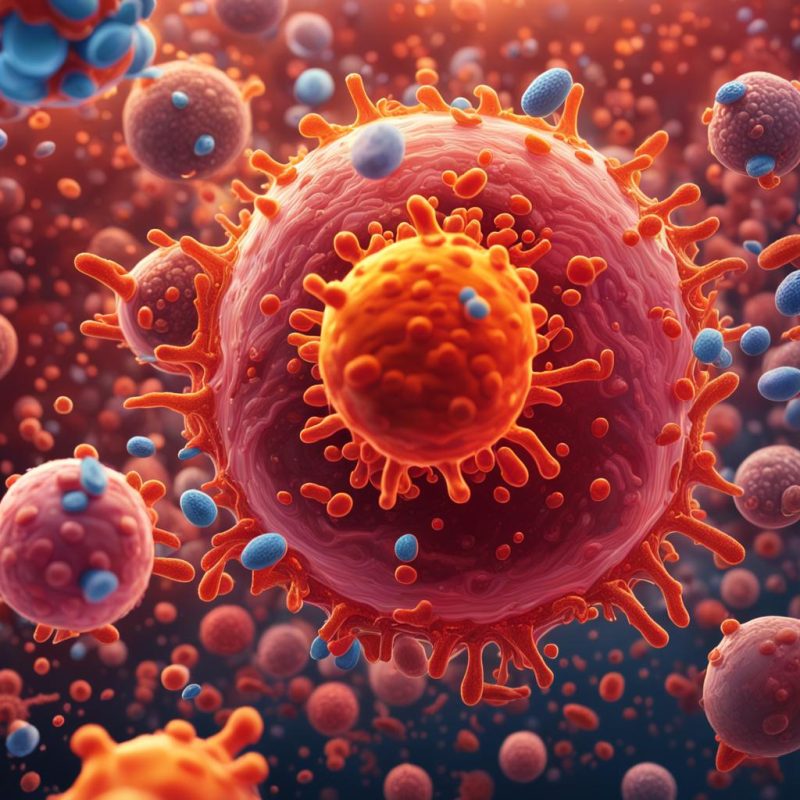Written by: Amanda Studnicki, Ph.D.
Platelet rich plasma (PRP) therapy uses a patient’s own blood to stimulate healing. PRP therapy is efficient, minimally invasive, and reduces injury recovery time by providing the wound site with excess growth factors (GFs), leukocyte-derived cytokines, and other biological factors that promote healing [1]. In general, platelets are present in the very early stages of inflammation. They contribute to clot formation, tissue repair, angiogenesis (creation of new blood vessels), and cell membrane aggregation.
While platelets cannot cross barriers of different tissue types, extracellular vesicles (EVs) can cross tissue barriers. EVs can enter the lymphatic system, bone marrow, and the space between joints from the blood [2]. A trigger (inflammation or infection) will cause platelets to generate extracellular vesicles [2]. It is thought that since EVs can permeate an organ that platelets cannot get to, the EVs help distant cells to communicate.
A Brief History
EVs were originally thought to be just a blood coagulant and part of a waste disposal system [3]. In recent years, EVs are thought to have a much bigger and broader role in the body’s cell-to-cell communications, and the concentration of EVs has been associated with disease states [2]. The two main types of EVs are microvesicles and exosomes [2].
Characteristics of EVs in PRP
EVs in PRP possess certain characteristics that make them ideal for tissue repair, such as transferring growth factors (GFs), cytokines, and other important molecules to target cells. One of their functions is to behave as vesicles that carry cargo such as transcription factors, mRNA, and microRNA [4]. Interestingly, EVs have both pro-inflammatory and anti-inflammatory potential. To increase inflammation, EVs can [5]:
- Carry cytokines and lipid mediators
- Modify C-reactive protein (CRP)
To decrease inflammation, EVs can [5]:
- Provide 12-lipoxygenase to mast cells (stimulating lipoxin A4 production)
- Polarize macrophages
- Inhibit regulatory T-cell differentiation
Compared to platelets, EVs can cross tissue barriers, which helps to promote healing in areas of the body that are traditionally “hard to get to”. For example, EVs from platelets have been found in the synovial fluid and lymph (bone marrow), and are even thought to be able to cross the blood–brain barrier [6].
Research and Clinical Potential
EVs in PRP hold promising clinical potential in the fields of orthopedics, dentistry, dermatology, pain management, sports medicine, and more [7]. Platelet-derived EVs have been shown to promote tissue regeneration and constitute a very promising molecule in regenerative medicine.
In orthopedics, research shows that EVs are beneficial for the proliferation and differentiation of bone stem cells [8]. One research study found that, compared to PRP without EVs, PRP with EVs had a higher concentration of important growth factors for tissue repair. Another research study found that EVs in PRP can promote muscle regeneration [9] and tendon recovery [10].
Platelet-derived EVs also have a very important role in wound repair. One study found that PRP-EVs were the best at healing the skin of diabetic rats. The skin treated with the PRP-EVs had lots of angiogenesis (blood vessel growth), and the skin repairs lasted longer than skin treated with PRP alone [11]. There is also a growing interest in EVs in PRP for war zone applications where soldiers have serious skin wounds [12].
References [1] B. J. Cole, S. T. Seroyer, G. Filardo, S. Bajaj, and L. A. Fortier, “Platelet-Rich Plasma: Where Are We Now and Where Are We Going?,” Sports Health, vol. 2, no. 3, p. 203, May 2010. [2] F. Puhm, E. Boilard, and K. R. Machlus, “Platelet Extracellular Vesicles,” Arterioscler. Thromb. Vasc. Biol., Jan. 2021, doi: 10.1161/ATVBAHA.120.314644. [3] Y. Couch et al., “A Brief History of Nearly EV‐erything – The Rise and Rise of Extracellular Vesicles,” J. Extracell. Vesicles, vol. 10, no. 14, Dec. 2021, doi: 10.1002/jev2.12144. [4] J. Munir, J. K. Yoon, and S. Ryu, “Therapeutic miRNA-Enriched Extracellular Vesicles: Current Approaches and Future Prospects,” Cells, vol. 9, no. 10, Oct. 2020, doi: 10.3390/cells9102271. [5] M. E. van Hezel, R. Nieuwland, R. van Bruggen, and N. P. Juffermans, “The Ability of Extracellular Vesicles to Induce a Pro-Inflammatory Host Response,” Int. J. Mol. Sci., vol. 18, no. 6, Jun. 2017, doi: 10.3390/ijms18061285. [6] M. Antich-Rosselló, M. A. Forteza-Genestra, M. Monjo, and J. M. Ramis, “Platelet-Derived Extracellular Vesicles for Regenerative Medicine,” Int. J. Mol. Sci., vol. 22, no. 16, p. 8580, Aug. 2021. [7] J. Wu, Y. Piao, Q. Liu, and X. Yang, “Platelet‐Rich Plasma‐Derived Extracellular Vesicles: A Superior Alternative in Regenerative Medicine?,” Cell Prolif., vol. 54, no. 12, Dec. 2021, doi: 10.1111/cpr.13123. [8] E. Torreggiani, F. Perut, L. Roncuzzi, N. Zini, S. R. Baglìo, and N. Baldini, “Exosomes: Novel Effectors of Human Platelet Lysate Activity,” Eur. Cell. Mater., vol. 28, pp. 137–51; discussion 151, Sep. 2014. [9] S. R. Iyer, A. L. Scheiber, P. Yarowsky, R. Frank Henn III, S. Otsuru, and R. M. Lovering, “Exosomes Isolated From Platelet-Rich Plasma and Mesenchymal Stem Cells Promote Recovery of Function After Muscle Injury,” Am. J. Sports Med., Jun. 2020, doi: 10.1177/0363546520926462. [10] J. Lu et al., “Rejuvenation of Tendon Stem/Progenitor Cells for Functional Tendon Regeneration Through Platelet-Derived Exosomes Loaded With Recombinant Yap1,” Acta Biomater., vol. 161, Apr. 2023, doi: 10.1016/j.actbio.2023.02.018. [11] S.-C. Guo, S.-C. Tao, W.-J. Yin, X. Qi, T. Yuan, and C.-Q. Zhang, “Exosomes Derived From Platelet-Rich Plasma Promote the Re-Epithelization of Chronic Cutaneous Wounds Via Activation of YAP in a Diabetic Rat Model,” Theranostics, vol. 7, no. 1, p. 81, 2017. [12] J. R. Hess, C. C. M. Lelkens, J. B. Holcomb, and T. M. Scalea, “Advances in Military, Field, and Austere Transfusion Medicine in the Last Decade,” Transfus. Apher. Sci., vol. 49, no. 3, pp. 380–386, Dec. 2013.

